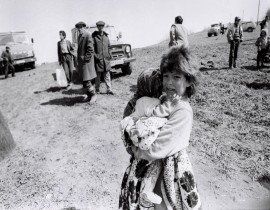Politicon.co
Urbicide: Armenia’s Deliberate Killing of Shusha City
Shusha is situated in Azerbaijan’s South Western mountainous region Karabakh. It is located at an altitude of 1600 meters above sea level. Shusha is culturally, historically and strategically very significant. Newly liberated city is referred to by number of different names e.g. “beating heart,” “crown jewel,” “crown of Karabakh,” “pearl of Turkic nations,” “paradise,” and “cultural capital of Karabakh.” The geographical position makes it strategically very significant in the region. Tsarist Russia could not neglect Shusha’s strategic significance and annexed it under the treaty of “Turkmenchy.” The strategic significance of Shusha prevails. It is believed one who controls Shusha controls Karabakh. The accounts of the Karabakh wars affirm it. During the first Karabakh War, Armenians captured Shusha. Consequentially, Yerevan took control of Karabakh. In the second Karabakh War Azerbaijan achieved its primary goal to regain control of Shusha subsequently the entire Karabakh region fell in the hands of the victor. On November 6, 2020 fight for Shusha started and two days later it was liberated by Azerbaijani special forces. Armenian illegal occupation forces were expecting Azerbaijan’s forces at the gate of Khankandi. Azerbaijani forces climb-up straight dangerous mountains in the South of Shusha reached Jidir plain with their light machine guns to the surprise of Armenians. Azerbaijani forces faced fierce resistance in the bloodiest hand-to-hand battle. Finally, the enemy was pushed out of the city. Bullet holes sprayed along the rocks can be seen in the area.
President Ilham Aliyev's announcement that Azerbaijan has regained control of Shusha was denied by Armenians. Azerbaijan’s Ministry of Defence released a video on social media showing the Azerbaijani military guarding Shusha city. The loss of Shusha was a major psychological blow to the Armenian population. They came out in the streets of Yerevan, raged with anger they stormed the parliament building. It divided Armenian society and the ruling elite. A year later President declared November 8, as a victory day to celebrate Azerbaijan’s historic victory.
City tour of Shusha exhibits two different mindsets, two different city tales and two distinct ways of life. First exhibit savagery, illegal occupation by military and paramilitary forces littered the city with destruction, cultural genocide, state-sponsored terrorism and vandalism. Armenia during its illegal occupation of the region illegally expelled Azerbaijani population from their homes, destroyed public-private properties including museums, thirty-one libraries, eight cultural houses, monuments, desecrated religious places including eight mausoleums, eleven mosques, cemeteries, looted and illegally transported statues, Azerbaijanis cultural and religious property to Armenia. It was part of a deliberate attempt and Armenian state-sponsored terrorism to wipe Azerbaijanis rich culture, history and memories. Demolished houses, destruction, desecration and other signs of catastrophe in newly liberated Shusha are terribly vivid. In one incident occupation forces destroyed and desecrated the mausoleum of great poet and vizier of Karabakh khan Molla Panah Vagif in Shusha city. House of Khurshidbanu Natavan famous poetess and granddaughter of Panah Ali Khan Javanshir in Shusha was badly damaged during Armenian occupation. In third incident statues of Uzeyir Hadjibayov and Bulbul Azerbaijan’s musicians and Khurshidbanu Natavan famous poetess were illegally transported to Armenia. Ashaghi Govhar Aagha, Saatli and Yukari Govhar Agha mosques in Shusha city were also not spared. Armenian government tried to change the Azerbaijani identity of leftover mosques by carving Persian on their rock walls. Deserted streets, damaged statues, broken windows, burnt trees and bullet holes sprayed along the walls can be seen across the city. Not even a single building can be seen intact. Cultural genocide worth billions of United States (US) dollars and the damage caused is irrecoverable.
Contrary to Urbicide strategy of chaos deliberate killing of a city as a part of strategic campaign to throttle it. Azerbaijan’s approach is based on capacity building, renovation and reconstruction. Prime motive of this strategy is to restore its historical appearance, familiarize younger generations with their glorious past and rich culture. The reconstruction is carried out in well-planned manner. It marks the beginning of new era to restore past glory. Victory gave new hope of returning to internally displaced people (IDP). Reconstruction of Shusha city is much more than the rehabilitation. It promises Azerbaijan’s commitment to peaceful coexistence with Armenia to offer fruits of bilateral cooperation, affirms prosperity, sustainable development, regional peace and security. Political leadership in Baku aims to turn it into paradise and open the city for foreign tourists to promote Azerbaijani culture, history and architecture in communities of nations. It will help generate foreign revenue for the country. President Ilham’s strategy is anti-thesis of acts of vandalism, Armenian Urbicide and barbarism. Government aims at restoring the lost pride. It begun these efforts with the construction of hundred kilometers long newly constructed “victory road,” Zafar Yolu. Beautiful road makes journey to Shusha comfortable, reduces distance and travelling time. It is noteworthy to mention that President Ilham Aliyev and the First Lady Mehriban Aliyeva have traveled on it during their visit to Shusha. Heavy trucks, military vehicles, convoys carrying foreign tourists, construction equipment, machinery and logistics can be seen running on the road. Government has placed signs indicating potential threats of Armenian planted Improvise Explosive Devices (IEDs) in the area. Presently, it is unsafe to walk in the plains or forests. Azerbaijan’s National Agency for Mine Action (ANAMA) is inspecting every inch and corner of liberated areas to demine it.
Travelers are filled with mixed feelings of joy to visit liberated areas but roadside deliberately burnt trees, on purpose destroyed vineyards, uninhabitable houses, purposefully razed to ground buildings, remains of destroyed cars, IEDs littering entire liberated areas make them sad. Government restricts emotionally charged IDPs from visiting their ancestral homes to prevent loss of human lives as a result of Armenian planted IEDs. Only elderly people are allowed and issued special permits to visit liberated areas. The reconstruction work in the area is underway. Mausoleum of great poet Vagif has been reconstructed. Haider Aliyev Foundation is repairing Ashaghi Govhar Aagha, Saatli and Yukhari Govhar Agha mosques in Shusha city. Gazanchy Cathedral is constructed in Shusha city. Shusha fortress was deliberately damaged by the occupation forces during second Karabakh war. Fortress is renovated and opened for tourists. In an attempt to destroy the ecosystem Armenians burnt trees before leaving the city. In November, 2021 the President and the First Lady planted trees in Topkhana Forest Shusha to restore it.
Maintenance and reconstruction work will be completed in phases. Life is partially restored in the city as few shops are opened, labors, tourists and military guarding the city can be seen in the streets. Presently, three different hotels are functioning in the city including Kharabulbul to cater to the needs of tourists. The city is supplied with clean drinking water and connected with a newly constructed grid station to ensure an uninterrupted supply of electricity. Cellular companies are providing cellular services in the area. However, internet facility is available at hotels only. The city is treated with special care as it bears importance for the entire Azerbaijani population. President Ilham Aliyev issued a special decree to declare Shusha Cultural Capital of Azerbaijan. Several ghost houses have been renovated and converted into hostels for reconstruction workers, engineers and other officials. Government plans to continue its drive to renovate additional ghost houses and settle IDPs in the area. Time-consuming reconstruction is a difficult task requiring patience, extreme care to restore the historic appearance of the city.
Authors
Dr. Ashfaq Ahmed, Assistant Professor Department of Politics & International Relations (DPIR), University of Sargodha Pakistan. Dr. Ahmed is Azerbaijan International Development Agency (AIDA) Research Fellow.
Saima Kausar, M.Phil Scholar Department of International Relations Iqra University Islamabad Pakistan. Ms. Kausar served as a visiting lecturer in the Department of History & Pak. Studies University of Sargodha Pakistan.
![]()
- TOPICS :
- Conflict and peace
- Domestic affairs
- REGIONS :
- Russia and CIS


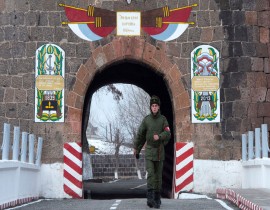
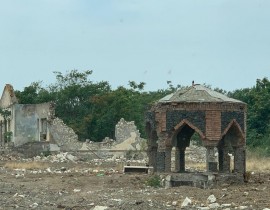
png-1748065971.png)

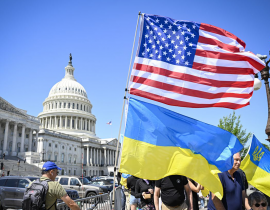
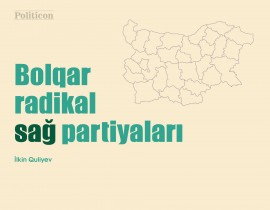
jpg-1599133320.jpg)
